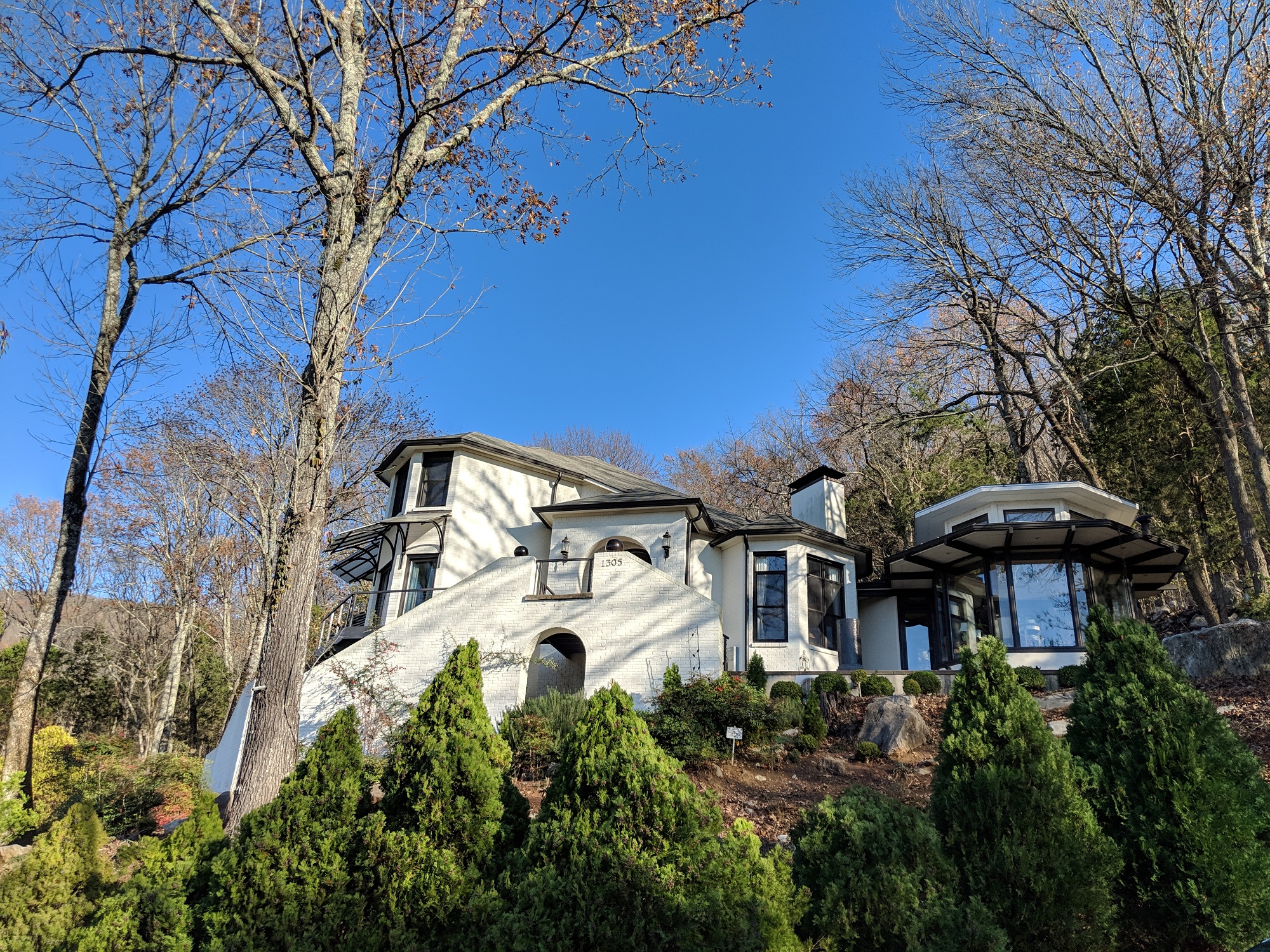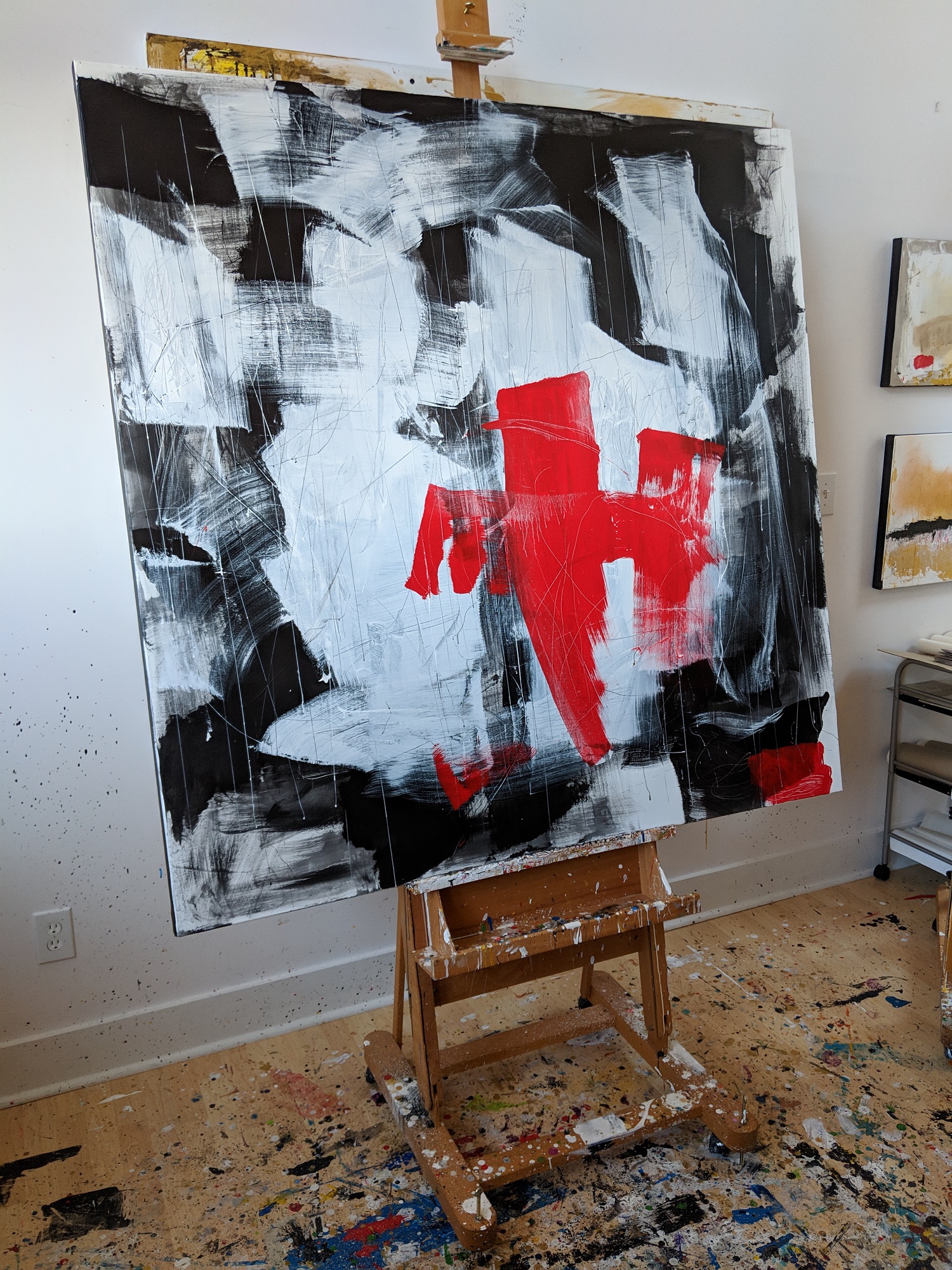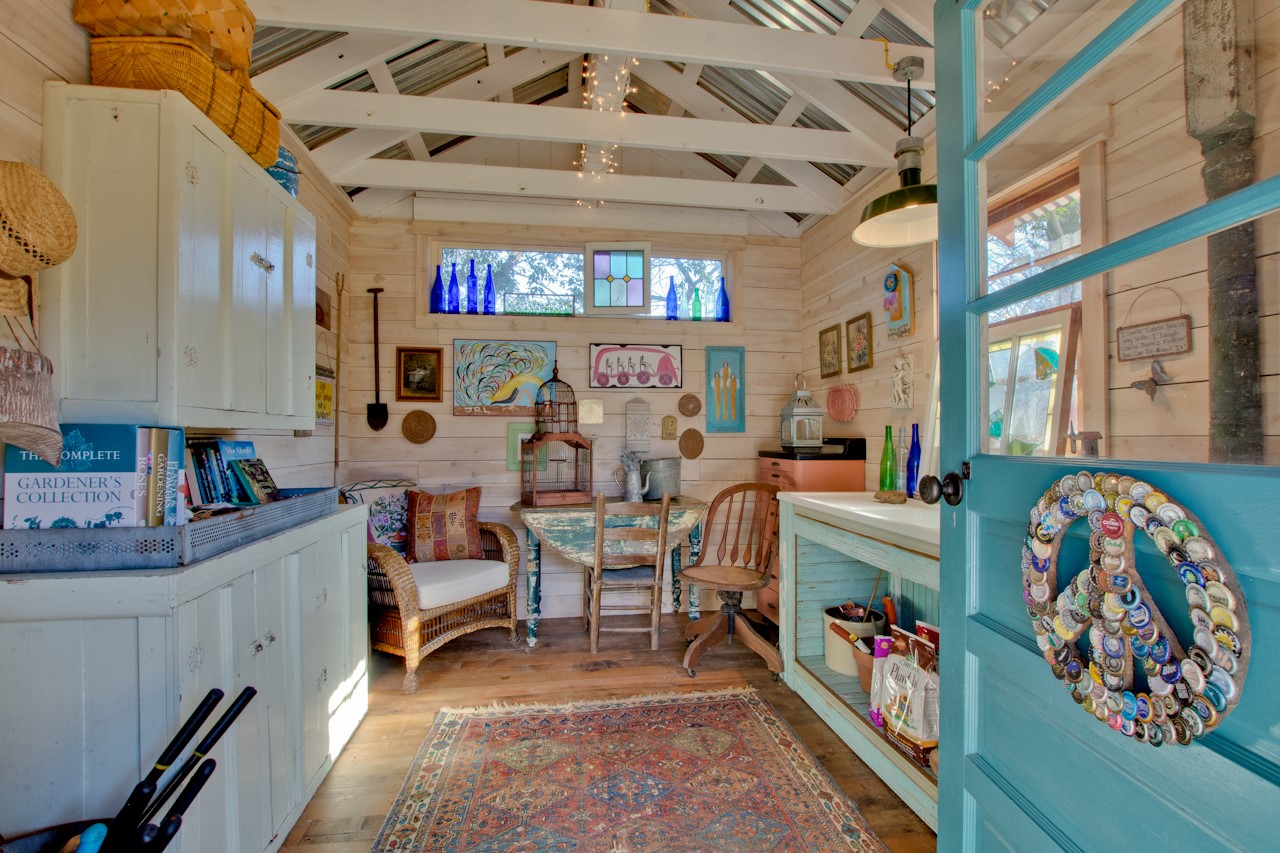Art Tour of Homes 2019: Meet the Homeowners
Art Tour of Homes 2019: Meet the Homeowners
The homeowners featured on the 2019 Art Tour of Homes & Preview Party share how they find inspiration, the pieces of art that give them pause, and why they believe original art brings life to a home!
What is your favorite piece of art in your home and what is the story behind it?

Tiril Benton’s home, featured on the 2019 Art Tour of Homes
Tiril Benton: It would be our house. It is a work of art in and of itself: a home to works of art. Each piece contains its own story, interacting in harmony. For us, it is a symphony of life and beauty. Every piece resonates with each one of us creating a deep and abiding sense of peace and unity.
Alice Battle: Many years ago, when we lived in south Alabama, an artist came to town and visited the ballet studio where my older daughter took lessons. She watched all of the students practice and then chose my daughter as a model. She asked for our permission and paid my daughter to model for her. As it turned out, she was a very well-known artist who traveled around the country, painting dancers. Today, numerous paintings of my daughter are in homes and galleries throughout the U.S. We are lucky to have bought one.
Charles McCary: I like all my art and it is hard to say “I have a favorite”. Each piece speaks to me in different ways. However; my most recent art acquired (last month) I enjoy in a more spiritual way. It is a wood block by Kent Ambler. Birds in the branches of a tree in moon light. The symbolism of birds and the branches cause me to pause.
Cathy VanValkenburgh: My favorite piece of art in my home is a piece by Anthony Springer of a lady walking down a sidewalk in Greenwich Village. I actually own 3 of his paintings. I originally saw a piece of his artwork on Ebay, of all places, and immediately became interested in his work. After much research, I came in contact with a woman who was handling the sale of his estate after he died. He was born in 1928, a native New Yorker, worked as a lawyer before deciding to make painting his vocation at the age of 40. Tony earned a well-deserved reputation as the Painter of Greenwich Village. He died in 1995 leaving behind hundreds of beautiful, moody gray cityscapes.
How did you form your design aesthetic?
Battle: We have been art collectors for 40 years. There was no intentional plan to purchase this or that style of art or works that “matched” our decor. For several years, we have bought art for each other for special occasions or together to commemorate our anniversary. When someone in our family has passed away, we have bought a piece that reminded us of that person so that when we see it, we have something tangible to call up sweet memories.
We like many genres and don’t limit ourselves to our walls. Our aesthetic is that if something is hand-wrought, it is better than that which is mass produced. We have art in every room in our house, in our porch, shed, patio and even our yard.

A painting by Art Tour host Tiril Benton
Benton: The concept of freedom and space dominates encouraging self reflection and the opportunity for healing and enrichment. Plans are not a part of my aesthetic in life or design. I work intuitively on every level of being allowing all things to evolve.
What advice do you have for people who are new to art-buying?
Battle: Buy what speaks to you, not what matches your furniture or wall paint! Visit art shows (like Art on the Mountain, Panoply, Lowe Mill, and venues in town that have meet & greet openings for local artists). Go to student art shows at local colleges. Don’t limit yourself to one medium; consider sculpture, art glass, pottery, and mobiles as well as paintings and photography.
Benton: Follow your heart. If something speaks to you, listen.
McCary: Advice for art-buying would be to simply buy what holds your gaze. It doesn’t have to be expensive, labeled , or identified. Don’t try to understand it. It may be the symbolism, the dance of colors or the craftsmanship. Also, I would first look in your geographic area. We have so many great local artists and galleries.
VanValkenburgh: Buy art because you love it for whatever reason you were drawn to the piece. It should outlast most everything in the house. Artworks can be passed down through family and friends. My collector friends and I put dibs on art in each other’s homes saying, “Will you please leave that to me when you die”! Don’t be too quick to buy an original piece that you have fallen in love with, but don’t be too slow either. It may be gone the next time you go back to get it!
What would you say to people who have pre-conceived notions about what it means to be an “art collector” or that buying art isn’t ‘for them’?
McCary: My view is that art is not an investment or a status. Some of my favorite pieces were inexpensive and of no notoriety. My wife says it best when she says “put it where I can see it during the day.”

Alice & Bill Battle
Battle: Art collectors aren’t necessarily “stuffy” or merely investors. They aren’t necessarily wealthy and own museum-worthy oils. You can often spend less on a piece than you would for something mass-produced. Art can elicit emotions that simply aren’t available with a blank wall. Art can evoke memories, feelings of happiness or contemplation, and can perhaps also be a wise financial investment. We started out small, framing our children’s art. We didn’t spend much money at first, but we wanted original art, not something mass produced. We wanted to have a little piece of the artist’s “soul” or creative spirit in our home. Ultimately, you will have a home that is alive and colorful and interesting.
Benton: Not to be intimidated. Listen only to yourself and do not feel that it has to be anything other than what it is. Anything that comes into your life that resonates with you by lifting your spirits will only serve to enhance your existence and others whose paths you cross.
Why is a home filled with original art important to you?
VanValkenburgh: I love filling my home with original art work. The greatest benefit is the feeling of happiness it provides, which starts from the find, the purchase, and to the placement in the house
Benton: Art in all its forms is the language of the soul, a language through which we are given the opportunity to enrich and enlarge our essence. A room or a home that has no art is void of expression. There is no room for dialogue.

The home of Alice & Bill Battle
Battle: For us, owning original art is important because we connect with the artist and his or her creative spirit that called the piece into being. We have met nearly all the artists whose works we own, so we have wonderful memories of the maker as well as the creation. All in all, our modest home makes us happy because of all the beauty that surrounds us.
McCary: Original art has the soul and DNA of the artist. Reproducing images can take away from the intention. Buying from local artists who we know or buying from local galleries build a sense of community. However, I do have some prints what I enjoy – posters that were reprinted on the original presses, or prints attached to memories of the Van Gogh museum or the Guggenheim in New York.
